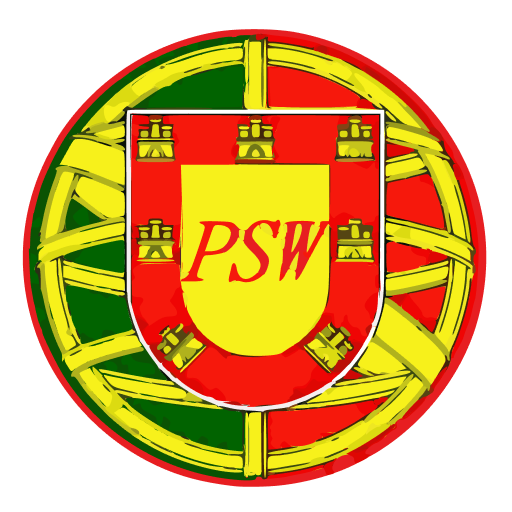Bica is the given name for a small cup of coffee in Portugal. You may know it as an espresso.
There are a few theories about the origin of this word but it seems that nobody really knows for sure. This word is used in many areas of the country, especially in Lisbon and the Algarve. Click here to watch on YouTube
If you would like to learn about the other coffees you can get in Portugal, take a look at this link. How to order a coffee in Portuguese
In this article we are going to look at a few theories and you can make your own mind up. I will also give you my thoughts at the end of the video.
First Theory
The first theory is that when the first espresso machines appeared in Portugal, customers were not used to their strong, bitter taste. As a result, the coffee wasn’t very popular so somebody cunningly devised a way of getting around this problem. Posters were placed in establishments where the espresso coffee was sold with the slogan “Drink this with sugar”. “Beba Isto Com Açúcar”. And the word BICA was an abbreviation for this. People started calling the coffee ‘a bica’.
All this was supposed to have happened at the legendary A Brasileira Café do Chiado, under the management’s initiative to create the slogan with the aim of making the drink more palatable for its customers. Some actually claim that it could have been a publicity campaign too.
That sounds almost feasible until we get onto the next theory.
Second Theory
Before we go straight into the second theory we have to learn a little about how coffee was prepared 100 years ago…
Initially, coffee was prepared in a coffee pot with boiling water, in which ground coffee or barley was dissolved. This coffee was called “coffee grounds or Barley Coffee” (Café de Borras), due to the bitter and unpleasant grounds that formed from the undissolved coffee.
Wait a minute, if people were already used to bitter coffee, the idea of “Beba Isto com Açúcar” doesn’t seem to cut it now does it?
The original filters for this coffee were porous “bags”. (I had actually never heard of this method before I started researching). This is most likely what we would call filtered coffee now. These days filters are made out of a special paper and the modern percolators keep the coffee hot.
Back then however it wasn’t like that. As you probably know, at the beginning of the century, espresso machines did not yet exist. Therefore coffee was brewed in a different way. The ground coffee was dissolved, strained in the above mentioned bags, pressed, and poured through a small tap (spout) into coffee pots used to serve coffee at the table.
In these coffee pots the coffee would end up cooling down and losing its aroma. It is said that one day some of the customers complained about the quality of the coffee, and the owner had to intervene and ask an employee to fill a cup directly from the spout, that is, from the bag. Thus keeping its more intense flavour and aroma. (It sounds gross to me).
This caught on and the customers started asking for their coffee to be poured directly from the spout into a cup. This led to them calling it a Bica which in English can actually mean “spout”.
So here we have two theories. One after the espresso machines were here and one before.
Definition of Bica in the dictionary
There is no real way of knowing for sure.
If we look up the word ‘Bica’, it says:
bica – Spout
Nome Feminino – feminine Noun
- Parte por onde a água ou qualquer líquido cai, de certa altura.
Part where water or any liquid falls from a certain height. - Líquido que cai em fio – Liquid that trickles .
- Fonte pública de água – = CHAFARIZ – Public water source . = FOUNTAIN
To me it seems more plausible that the word ‘bica’ came from the word “spout”. The spout where the coffee trickles out of the machine, for example, resembles some of the old Fontes that would have a half pipe made of stone where the water would constantly trickle out. You don’t seem to see too many today.
These are called Bicas
The photo above has 3 bicas where the water would run constantly. Many years ago people did not have abundant running water like we do today. This was one of their main water sources.
Below are the actual ‘bicas’ from the fountains. These were made out of stone.
So after seeing the above image, it seems more logical that the word bica for coffee is actually referring to the spout of the espresso machine.
What do you think?
Are you thinking of taking the CIPLE exam but need a precourse to start? Entering into a government course can be overwhelming unless you have a good grasp of grammar – these courses will ease you into the grammar and give you a good foundation. Think of it as a foundation course and a stepping stone to secure your success in the next level.

5 responses to “Do you Know Origin of the ‘Bica’?”
I heard that it was a coffee brand name. Like Hoover.
Hi Paul.
Thanks for your reply. I hadn’t heard that one. I’ll be sure to look into it 🙂
I checked this out and I found out the “Um cimbalino”, actually comes from the brand of Italian machines used at the time. The brand was “La Cimbali”. Thank you for making me investigate that one!
I have heard of the first theory
Yes, I think most people have. I only read about the other, when I was actually writing the article. 🙂